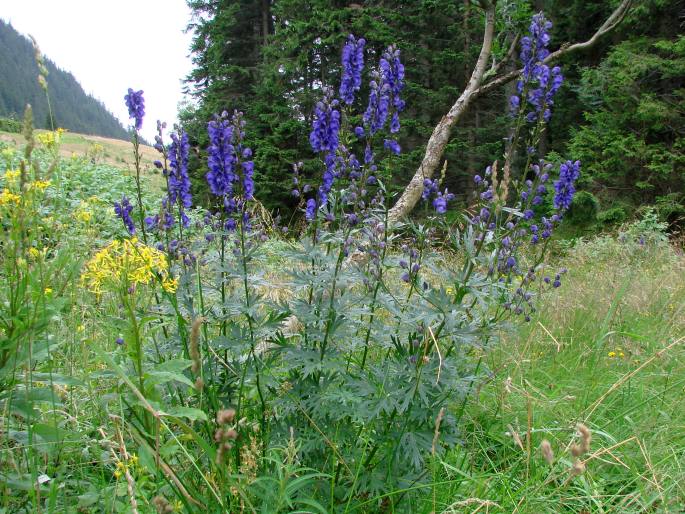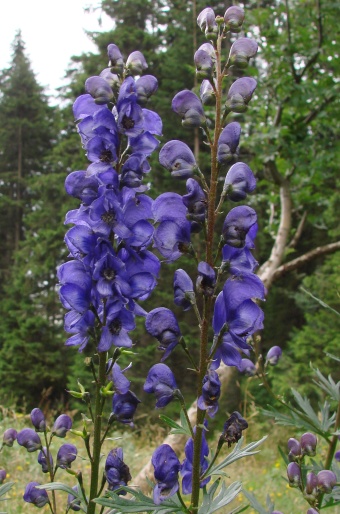Syn.: Aconitum bracteosum J. Presl et Bercht. et J. Presl, Aconitum callibotryon Rchb., Aconitum callibotryon subsp. hians (Rchb.) Dostál, Aconitum firmum f. calliobotryon (Rchb.) Gáyer, Aconitum koehleri Rchb., Aconitum napellus subsp. hians (Rchb.) Gáyer, Aconitum hians Rchb., Aconitum rigidum Rchb., Aconitum tauricum var. koehleri (Rchb.) Rchb.
Family: Ranunculaceae Juss.

Distribution: Central Europe – an endemic species of the Bohemian Massif, it occurs in mountain areas of Bohemia, Moravia, Silesia, Bavaria and northern Austria.
Ecology: It grows in subalpine meadows, on stream banks, in forest margins, from mountain to subalpine zone. It blooms from July to September.

Description: A perennial herb with an erect stem, 30–150(–200) cm tall. The leaves are petiolate, palmately divided, segments 3–5 mm wide, middle leaf-segment divided for 1/2–2/3 of its length. Inflorescence little-branched, raceme narrow, flowers 2–3 cm long, dark violet, helmet hemispherical, low. The fruits are follicles.
Threat and protection: Aconitum plicatum is a protected plant in Czechia, Poland and Germany.
Note: The Monkshood is occasionally cultivated in the gardens. It is a very poisonous plant.




These images were taken in Czechia, Bohemia, Krkonoše, Obří důl (July 28, 2007).


